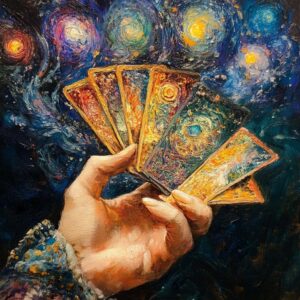
Tarot cards are rich with symbols, and understanding these symbols allows for a comprehensive and nuanced reading. The symbols are numerous and diverse, varying depending on the Tarot deck used. They draw from a variety of sources, including numerology, astrology, Kabbalah, Jungian archetypes, color symbolism, spiritual significance, and dream interpretations. Each symbol adds depth and context to the cards, providing insights that go beyond their surface meanings. By exploring these symbols, readers can unlock a deeper understanding of the messages conveyed through the Tarot, connecting the abstract with the tangible in their interpretations.
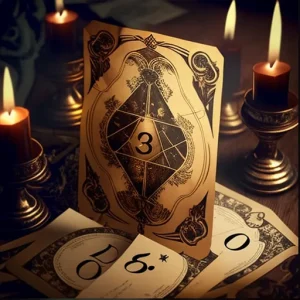
The Tarot deck is a complex and rich system composed of 78 cards divided into two main sections: the Major Arcana and the Minor Arcana. The Major Arcana consists of 22 cards, each representing significant life events and spiritual lessons. Complementing this are the 56 cards of the Minor Arcana, which are further divided into four suits: Wands, Pentacles, Cups, and Swords. Each suit corresponds to one of the four classical elements: Fire, Earth, Water, and Air, respectively. These suits and their associated elements reflect different aspects of human experience and the natural world, providing a comprehensive framework for interpreting the Tarot's symbolic messages.
Wands: The Element of Fire
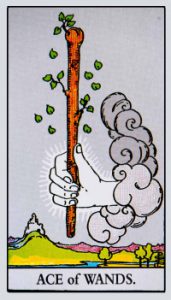
In the Tarot deck, Wands symbolize the element of Fire—a force of active, primal energy associated with spirituality and higher thought. Fire embodies passion and drive, often representing the active and creative aspects of life. As a phallic symbol, Wands reflect the generative and masculine energies that fuel growth and inspiration. When Wands appear in a reading, they often highlight themes such as ambitions and goals, motivation and purpose, passion, and transformation. Their presence can indicate a period of significant change, a surge of creative energy.
Pentacles: The Element of Earth
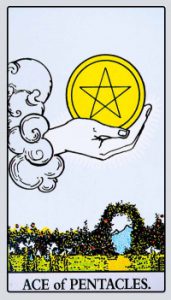
In the Tarot deck, Pentacles, often depicted with a five-pointed star, represent the element of Earth. This element is grounded and rooted in the physical realm, reflecting the material aspects of life. When Pentacles appear in a reading, they provide insights into one's physical state or address matters related to the tangible world. Themes associated with Pentacles include finances, health, business, commerce, and career. Their presence typically highlights issues related to material stability, practical concerns, and the accumulation of resources or wealth.
Cups: The Element of Water

In the Tarot deck, Cups represent the element of Water. Water embodies the emotional and intuitive realms and is symbolically linked to the feminine aspect of receptivity and containment. Cups are often associated with the womb, reflecting their role in nurturing and holding emotional experiences. When Cups appear in a reading, they address matters related to emotions, such as feelings, love, and relationships. Specific themes represented by Cups include emotional well-being, romantic connections, interpersonal relationships, personal interactions, intuition, and creative endeavors.
Swords: The Element of Air
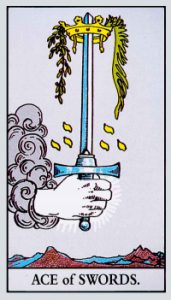
In the Tarot deck, Swords represent the element of Air. Air is associated with the mental self and thought processes. Swords deal primarily with intellectual matters rather than physical violence. Similar to a double-edged sword that can be wielded for both good and ill, the human mind can be a battleground of struggles and training. When Swords appear in a reading, they indicate mental rather than physical conflicts. This suggests that a person may be trapped by their own negative beliefs or unable to see a way out of their problems. Specific themes represented by Swords include challenges, confrontations, courage, conflicts, arguments, and decisions.
Numbers and Symbols: Tarot Cards and Numerology
Symbolism of Court Cards
Pages: Youthful Energy, Service, Tendency to Make Mistakes
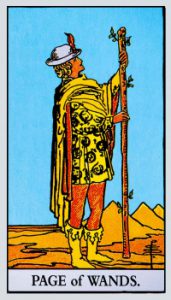 |
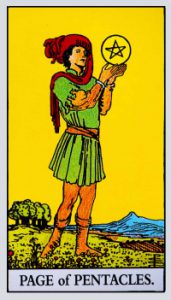 |
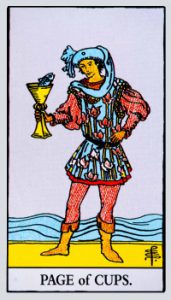 |
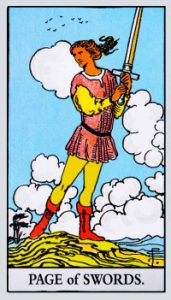 |
Knights: Taking Action, Progress, Need for Maturity
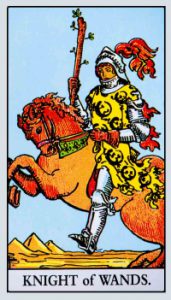 |
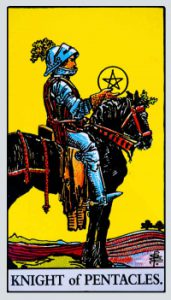 |
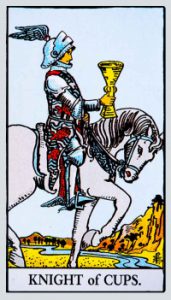 |
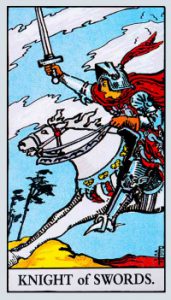 |
Queens: Empathy, Compassion, and Action
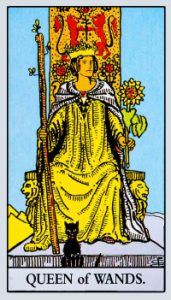 |
 |
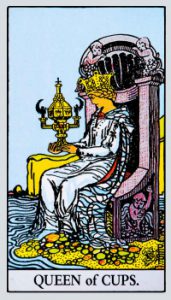 |
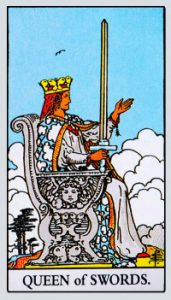 |
Kings: Leadership, Achievement, Success, Act in Times of Threat
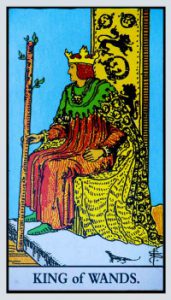 |
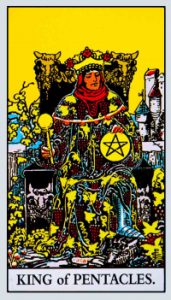 |
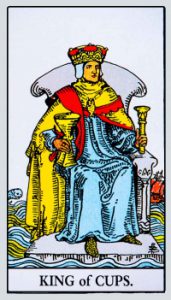 |
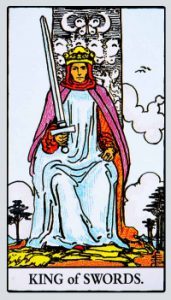 |
Symbolism of Colors in Tarot Cards
Colors have archetypal significance; they are chosen based on the energy they provide to the mind, body, and spirit. The colors are embodied in the images of the cards and express this energy, and their energetic meaning is a part of the card's interpretation.
The color red is active, warm, emotional, and impulsive, associated with nature and creation, as well as the earth and the body. It symbolizes determination, courage, and a connection to the physical dimension. Red represents power and vitality, and is linked to anger, impulsiveness, immediate gratification, and egocentrism. It is related to the root chakra, which represents the primal self and brings action and joy.
The color orange represents abundance and fertility. It symbolizes love, creativity, and inspiration, and also reflects a tendency towards artistic expression. Orange is associated with the sacral chakra, which represents feminine intuition and creativity.
The color yellow is associated with abundance, energy, and happiness. It represents courage but can also indicate caution and timidity. Yellow is linked to the solar plexus chakra, which influences both internal and external communication.
The color green represents nature, growth, life, freshness, and renewal. It signifies the true and fundamental essence of life. Green symbolizes a connection to abundance, prosperity, health, and healing. It is associated with the heart chakra, which represents love, balance, and peace.
The color blue symbolizes intellect, self-worth, and authority. It represents verbal communication and expression. Blue is associated with loyalty, trust, and achieving goals in an orderly and calm manner, as well as judgment and decision-making abilities. It is linked to the throat chakra.
The color indigo symbolizes the potential to reach higher consciousness and enhance the senses and inner vision from a place of awareness. It is associated with the third eye chakra, which represents objectivity and wisdom.
The color purple represents spirituality, symbolizing healing, foresight, intuition, communication, and spiritual learning. It can also signify energetic balance, understanding, and tolerance. Purple is a symbol of wealth and abundance and reflects the mysteries of creation and resourcefulness. It is associated with the crown chakra.
The color white symbolizes purity, innocence, holiness, youth, and humility.
The color gray symbolizes compromise, restraint, detachment, and protection.
The color black symbolizes fear, danger, threat, negative traits, and dark desires. It also represents sophistication, authority, power, and learning. Black conveys an air of mystery and is associated with the cycles of death and rebirth.
Birds in Tarot cards
 |
 |
 |
In Tarot cards, birds often appear, though they are not specific to any particular species. They are notably featured in the cards of the Knight of Swords, King of Swords, and Queen of Swords, and thus likely reflect the general symbolic meanings of birds.
In the context of Tarot, birds hold two main symbolic meanings:

The dove appearing in the Ace of Cups card symbolizes love, peace, and femininity. It serves as a sign from the Holy Spirit, God, or the universe. This imagery parallels the story of Noah, who sent out a dove to determine how far he and his family were from dry land. In Christian art, doves frequently appear to signify the presence of the Holy Spirit. The dove represents spirituality and the feminine aspects of the divine.
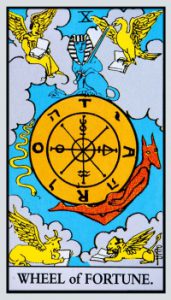 |
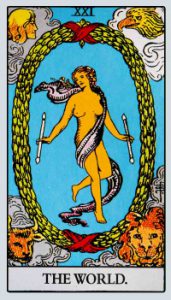 |
The eagle appears in the Wheel of Fortune and The World cards. In Greek mythology, the eagle is the symbol of Zeus, the king of the gods and the sky. It represents keen perception and the ability to bridge between worlds.
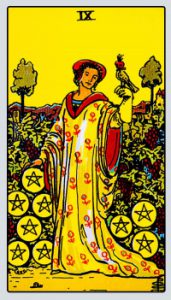
The hawk appears in the Nine of Pentacles card and shares similar interpretations to the eagle. Like all birds, hawks represent freedom and the ability to see far and wide.
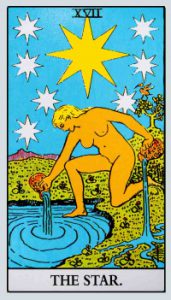
The ibis appears in the Star card and is associated with Thoth, the Egyptian god of wisdom, magic, writing, and insight.
 |
 |
The bull appears on the throne of the King of Pentacles card and in the bottom left corner of the World card. It symbolizes determination, a love for beautiful things, and earthly pleasures. Bulls are also associated with sexuality. References to Greek myths are common in Tarot cards, and the idea that bulls are symbols of sexual passion originates from the Greek myth of the Minotaur.

The cat appearing on the Queen of Wands card symbolizes mystery, connection to intuition, and mental ability. It represents quick instincts, self-preservation, independence, and freedom. The cat signifies unseen energy, psychological ability, and awareness of all circumstances before taking action.
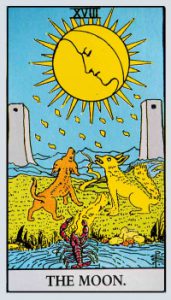
The crab appearing on the Moon card is related to emotions, the feminine element, emotional stability, and protection of the home.
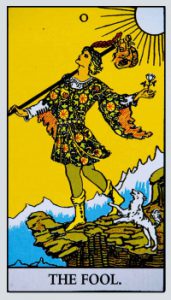 |
 |
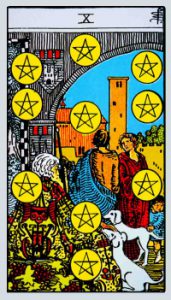 |
The dog appearing on The Fool card and The Moon card (to the left of the crab), as well as the dogs in the Ten of Pentacles card, represent companionship, confidants, unconditional love, loyalty, honesty, and truth. They reflect growth and instincts.
 |
 |
The fish appearing on the Prince of Cups and the King of Cups cards represent and symbolize emotions, like all water creatures.
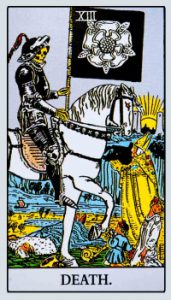 |
 |
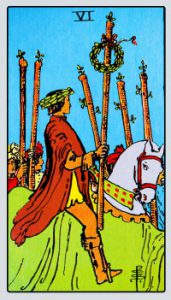 |
 |
 |
 |
 |
The horse appears most frequently among all the animals in the Tarot cards. The horses in the Knight cards symbolize initiative and hard work; they can represent rewards, achievements, stability, journeys, power, and freedom. They are a symbol of spirit, seeing the unseen, and forward movement. In the Death card, the horse represents one of the Four Horsemen of the Apocalypse and is a symbol of death.
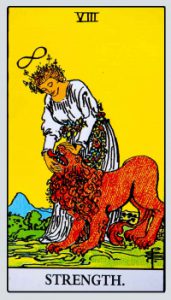 |
 |
 |
 |
 |
The lion appears in the Strength card, the Wheel of Fortune card, and the World card. Symbols of the lion are also present on the throne in the Queen of Wands and King of Wands cards. The lion symbolizes control, honor, and power, as well as the ability to dominate other creatures. It also represents passionate sexuality and courage.

The lizard that appears in the King of Wands card symbolizes the dream world, intuition, and psychic vision. It also represents the transition between realms, connecting the subconscious with consciousness and bridging the gap between dreaming and wakefulness.

The rabbit that appears in the Queen of Pentacles card represents success and is also associated with sexuality and fertility. It symbolizes motherhood and the feminine aspects of the material world.
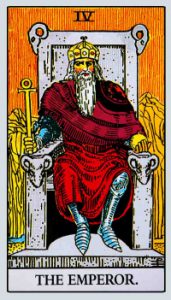 |
 |
The ram that appears on the Emperor card and the Queen of Pentacles card symbolizes the strict and serious manager who seeks financial stability.
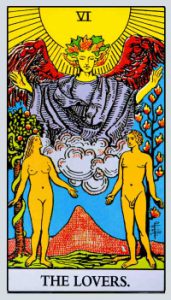 |
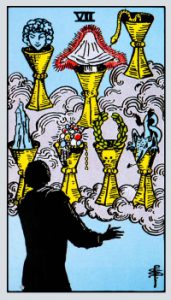 |
The snake, appearing in the Lovers card and the Seven of Cups card, represents temptation and sexuality and symbolizes renewal.

The wolf, appearing in the Moon card to the right of the Cancer, symbolizes both human restraint and the control of animal instincts. On the other hand, it also represents wild, natural, and intuitive thoughts and emotions buried deep beneath the surface. It embodies both intuition and clear thinking when making decisions.

The snail, appearing in the Nine of Pentacles card, symbolizes stability. Snails carry their homes on their backs, representing that a person carries their security within themselves. In this context, security and happiness come from internal work and are also a symbol of slow but steady progress. Success comes at a snail's pace.
Mythological Creatures in Tarot Card: Meanings
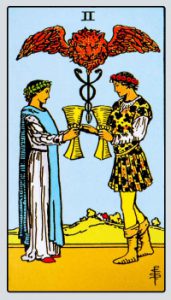
The caduceus is an ancient symbol depicting two serpents intertwined around a staff, forming the shape of the number eight. This symbol, which dates back to around 4000-3000 BCE, appears in the Tarot card Two of Cups. The serpents symbolize temptation and sexuality, while their entwined formation represents infinity.
The wings in the caduceus symbolize divine blessing and sacredness.
The chimera, a mythical creature from Greek mythology, is featured above the caduceus in the Two of Cups card. Traditionally, the chimera has a lion's head, a goat's body, and a serpent's tail. In some versions, it has three heads: a lion, a goat, and a dragon. In this card, we see a lion with wings. In Greek mythology, the caduceus is male, while the chimera is often female. This card represents the masculine and feminine aspects of spiritual love, with the chimera symbolizing the enduring nature of a relationship with the soul.

The dragon appearing in the Seven of Cups card is associated with treasure, guarding wealth, and accumulation. It symbolizes the triumph of good over evil. Dragon tales are often told to emphasize the power of courage and doing the right thing.

The jackal-headed Anubis appearing in the Wheel of Fortune card represents the Egyptian god Anubis and is associated with death. Anubis appears on the Wheel of Fortune because he symbolizes death, which in turn symbolizes fate. No one can escape death, just as no one can escape fate.
The Typhon serpent encircling the Wheel of Fortune is not an ordinary serpent. It represents the monster Typhon from Greek mythology, who met with misfortune and was defeated by Zeus, then cast into Tartarus. This struggle illustrates how fortune turns like the wheel. Another interpretation of the Typhon serpent is that it represents the malevolent deity descending on the left side. The serpent symbolizes the life force diving into the material world. On the right side of the Wheel of Fortune, Anubis, the Egyptian god, is seen welcoming souls into the underworld, while the Sphinx sits above the wheel.
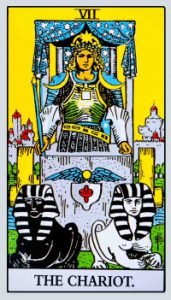 |
 |
The Sphinx appearing in the Chariot and Wheel of Fortune cards is a mythological creature described as a lion with a human head, and sometimes it is depicted with wings. It symbolizes the divine, nobility, mystery, and wisdom. The Sphinx represents knowledge and strength, but it also carries connotations of danger, as it was known for mercilessly devouring anyone who could not answer its riddle correctly.
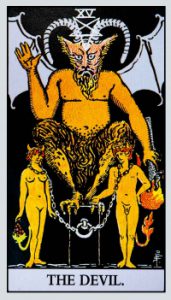
The Baphomet appearing in the Devil card is partly derived from the famous 1855 illustration by Éliphas Lévi, titled "Baphomet." The Devil is depicted with the feet of a frog or a goat. In non-Rider-Waite decks, Baphomet is a half-human, half-goat creature. Originally, Baphomet symbolized the balance between good and evil, male and female, and the connection between humans and animals. However, it has more recently been associated with occultism and has become a scapegoat for all things considered evil. The Devil is shown with bat or vampire wings, an animal that drains the lifeblood from its prey, symbolizing what happens when one succumbs to earthly desires.
 |
 |
The lotus flower appears on the flag in the Death card and in the pool in the Ace of Cups card. The lotus grows in muddy and murky waters, emphasizing its beauty and purity. It symbolizes rebirth. In Buddhism, the lotus flower represents renewal, spiritual awakening, and enlightenment, serving as a perfect example of how humans should live in purity. In ancient Egypt, there were two varieties of lotus: the white and the blue. Although the blue variety was actually a water lily, it was still considered a lotus plant. They symbolized the sun god, rebirth, and creation. In Hinduism, the lotus flower represented purity, beauty, eternity, and spiritual progress.
The colors of the lotus plant have different meanings:
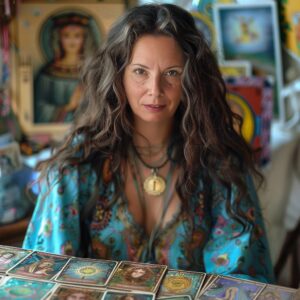
Orit Raphael, Tarot Reader for Personal Guidance, Insights, and Messages